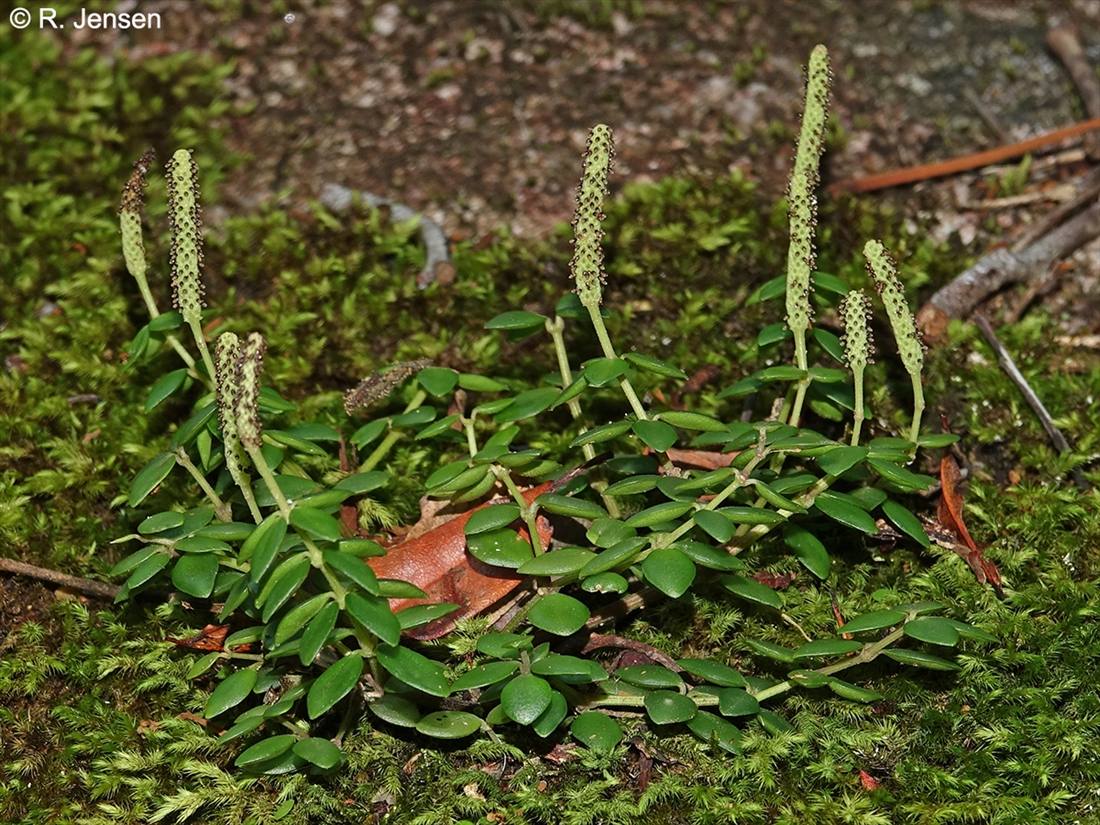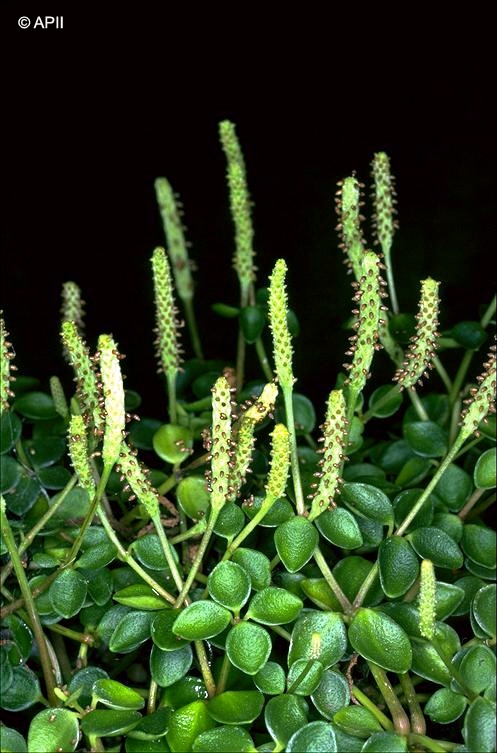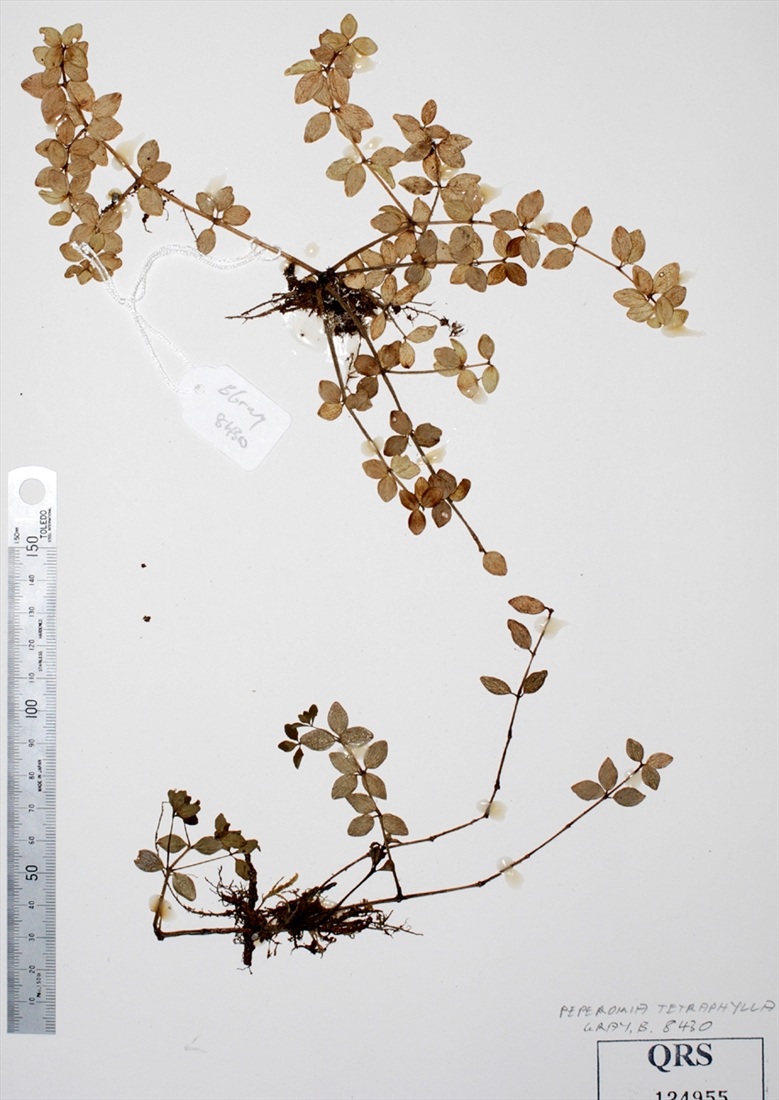Australian Tropical Rainforest Plants - Online edition
Peperomia tetraphylla Hook. & Arn.





Hooker, W.J. & Arnott, G.A.Walker (1832) The Botany of Captain Beechey's Voyage 3: 97. Type: Society Island, Forster (holo: BM, fide H.Huber, Rev. Handb. Fl. Ceylon 6: 292 (1987), nut n.v. by author).
Succulent herb up to 10 cm tall. Stems erect, becoming decumbent and rooting at the nodes, glabrous to densely puberulous; internodes up to 25 mm long.
Leaves very succulent, in whorls of 4, petiolate; lamina ovate-rhomboidal to orbicular, 10-14 x 7-9 mm, glabrous above, with sparse trichomes below when young, secondary veins obscure; petiole 7-10 mm long with sparse trichomes.
Spikes terminal and up to 43 mm long, solitary; peduncle 7-8 mm long and sparsely covered in trichomes to shortly pubescent; fertile axes 10-35 mm long, densely hispid. Flowers deeply sunken into axis, spaced 0.6-1 mm apart; floral bracts rounded, 0.3-0.5 long and wide; ovary rounded, 0.4-0.6 x 0.3-0.5 mm.
Drupes sticky, smooth, ca. 1 x 0.6 mm.
Features not available.
Occurs in NEQ, CEQ and southwards to south eastern New South Wales. Altitudinal range from 180-1200 m. Grows on moss-covered rocks and especially on tree trunks in the shade of rainforest, vineforest, sclerophyll forest, Eucalypt forest and micriphyll moss/fern thicket. Widely distributed in Africa, Malesia, Melanesia, New Guinea to Lord Howe Island.
Natural hybrids between Peperomia. blanda and P. tetraphylla are known from Qld.





